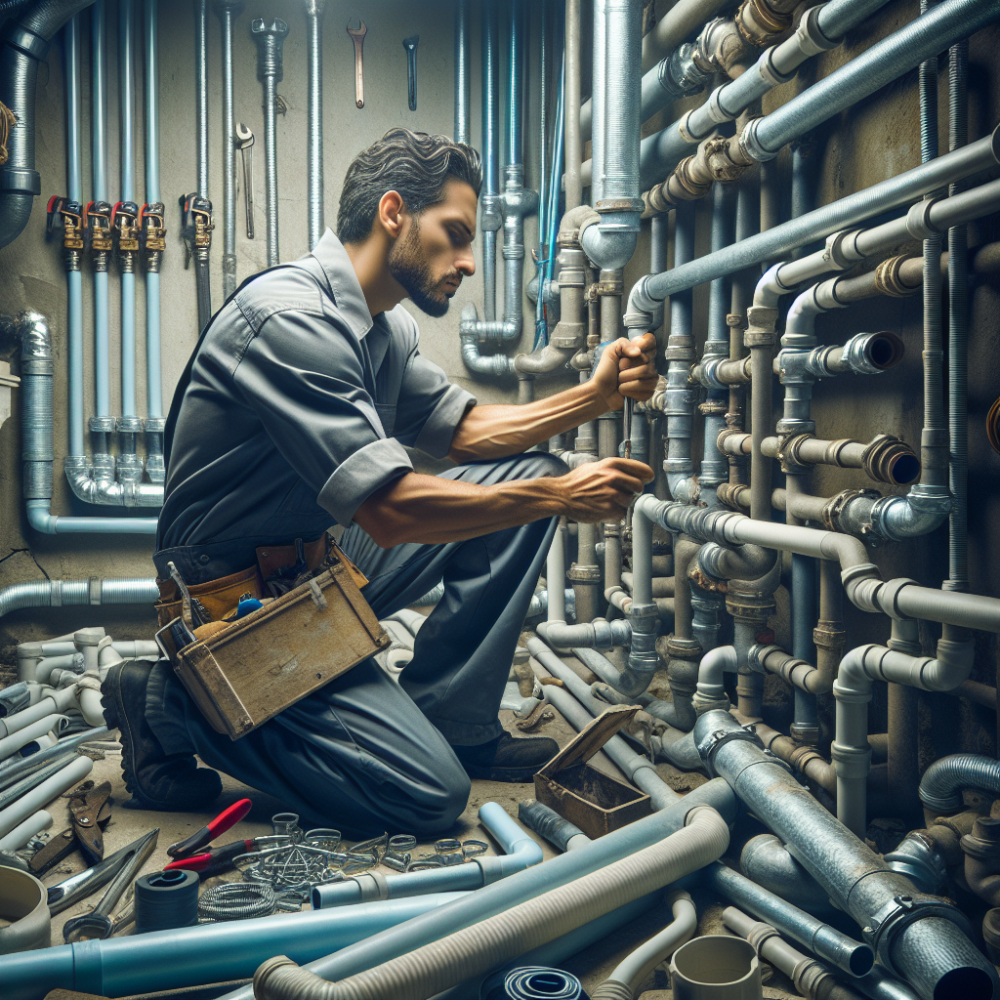A Comprehensive Guide to Understanding Pipes in Plumbing

Posted on: Sunday, March 3rd, 2024
Pipes are the foundational component of any plumbing system, responsible for the transportation of water and waste throughout residential and commercial buildings. As technology and materials have advanced, the variety of pipes available for different applications has expanded, making the selection process more complex but customizable. It is crucial for homeowners and property managers to understand the types of pipes, their uses, and the latest advancements to make informed decisions for maintenance, repairs, and upgrades. This guide aims to elucidate the intricacies of pipes within plumbing systems, ensuring readers are well-informed about the most significant element in plumbing infrastructure.
1. Material Matters: The material of the pipe determines its use, longevity, and compatibility with water types. Common materials include PVC, copper, PEX, and galvanized steel, each serving different purposes and environments. Copper is lauded for its durability and resistance to corrosion, making it ideal for main water lines, while PVC pipes are cost-effective and used extensively for sewer and vent lines.
2. Pipe Size and Diameter: Understanding the size and diameter of pipes is essential for ensuring efficient water flow and pressure. Pipe sizes are measured in diameters, with residential systems typically using pipes ranging from half an inch to 4 inches. The right size ensures that a system can handle the demand without leading to overpressure or underflow scenarios.
3. Joining Techniques: Pipes are connected using various methods, including soldering, welding, clamps, or push-fit fittings, each method having its specific application and suitability depending on the pipe's material and the system's requirements. Modern techniques like press-fit and sharkbite fittings allow for quicker installations and repairs.
4. Codes and Regulations: Plumbing installations and repairs must adhere to local building codes and standards, which dictate the types of pipes and joining methods allowed. These regulations aim to ensure safety, prevent health hazards, and guarantee the efficiency of plumbing systems. Professionals must stay updated on these codes, which can vary significantly by region.
5. Advances in Pipe Technology: The evolution of pipe technology has led to the development of more durable, efficient, and environmentally friendly options. For example, PEX pipes are gaining popularity for their flexibility, resistance to scale and chlorine, and easy installation, making them an excellent choice for indoors.
6. Leak Detection and Repair: Modern plumbing systems incorporate technologies for early leak detection to prevent water loss and damage. Techniques such as acoustic listening devices and thermal imaging can locate leaks within walls or underground, allowing for prompt repairs.
7. Cost Considerations: The cost of pipes varies widely depending on the material, size, and application. Initial investment in high-quality pipes can lead to long-term savings by reducing the need for frequent repairs and replacements. However, budget constraints may influence material selection, especially for large-scale projects.
8. Environmental Impact: Eco-friendly plumbing solutions, such as rainwater harvesting and greywater recycling, are becoming more prevalent. Pipes made from recycled materials or designed for low environmental impact are in higher demand, reflecting growing environmental consciousness in construction and renovation projects.
9. Choosing the Right Pipes for Renovation Projects: Renovations may require the integration of new pipes with existing systems. In such cases, compatibility, ease of installation, and future maintenance concerns should guide the selection process. It is often advisable to consult with a plumbing professional when making these decisions.
10. Professional Installation and Maintenance: While some minor plumbing tasks can be DIY, major installations, repairs, and maintenance work should be handled by certified professionals. Expertise in system design, familiarity with regulations, and access to the right tools can prevent potential issues and ensure the longevity of the plumbing system.
Understanding the nuances of pipes within plumbing systems is critical for the efficient operation and maintenance of any building. From selecting the appropriate materials and sizes to adhering to local codes and considering environmental impacts, this guide serves as a foundational resource for informed decision-making. As the industry continues to evolve, staying informed about the latest technologies and materials will be pivotal for homeowners, property managers, and industry professionals alike.